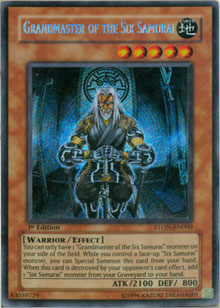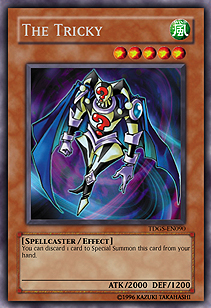Just because someone activates an effect when a monster is summoned doesn’t mean you can’t respond with Bottomless Trap Hole. The event-specific chain that deals with the normal summon, flip summon, or "inherent" special summon of a monster offers some flexibility.
The Timing Remains
Since this event-specific chain is used to deal with the successful summon of a monster, any effects that activate in response to the summon of a monster can be activated. Sometimes two or more cards in the chain will have an effect that looks for this type of event, and it is acceptable for them to be in the same chain. When I summon Caius the Shadow Monarch and my opponent activates Bottomless Trap Hole, I can chain Torrential Tribute because it has an effect that responds to the summon of the monster (Caius), which this chain is dealing with.
The effect that starts the chain doesn’t have to specifically respond to the summon of a monster. It is acceptable to activate an effect that is unrelated to the summon of a monster and follow it with an effect  that does respond to the summon. It isn’t usually practical to do this, but there are situations in which it can be helpful.
that does respond to the summon. It isn’t usually practical to do this, but there are situations in which it can be helpful.
Last week we determined that activating Dragon Ice’s optional trigger effect prevents Player A from using priority to activate the ignition effect of The Six Samurai - Yaichi. It is also possible for Player B to chain Bottomless Trap Hole in order to destroy Grandmaster of the Six Samurai and remove him from play.
When the chain resolves, Light and Darkness Dragon is destroyed. Its effect disappears because it is no longer on the field, so Player B draws a card for Jar of Greed. Now that the chain has finished resolving, Light and Darkness Dragon’s third effect starts a new chain to handle its special summon effect.
One Chain Only
We only get one chain we can use to respond to the successful summon of a monster. After this chain resolves, the timing to activate effects that respond to the summon ends, and these types of effects cannot be activated. This usually happens because the chain that activated in response to the monster being summoned has finished resolving, or both players decided to pass instead of responding to the summon.
Example 1:
Player A has
Torrential Tribute set and Player B has
Bottomless Trap Hole set, with
Giant Orc in attack position. Player A special summons
Cyber Dragon. Player A has the option to respond to the summon, and decides to pass. Player B now has the option to respond to the summon, but that player also chooses to pass.
Player A cannot activate Torrential Tribute at this time, because the opportunity to respond to ’s special summon closed when both players decided to pass instead of  responding. The timing to activate cards like Torrential Tribute is no longer correct.
responding. The timing to activate cards like Torrential Tribute is no longer correct.
After the chain resolves, Player B cannot start another chain with Torrential Tribute, because the chance to respond to the successful summon has closed. We only get one chain to use for responding to the successful summon, and it has been used.
Wrap-Up
Our final example covers a bit of everything we’ve seen from today’s discussion.
When Player A normal summons Junk Synchron, he has the choice of activating its effect. If he decides that he doesn’t want to activate its effect, he can use priority to activate Hand of Nephthys’s ignition effect instead, or pass. If he uses Junk Synchron’s effect, his opponent could respond with Torrential Tribute to destroy Junk Synchron and Hand of Nephthys. If he uses Hand of Nephthys’s effect, his opponent won’t be able to activate Torrential Tribute because there won’t be any monsters on the field.
Player A cannot decide to pass on both effects and perform a Synchro summon instead, because you can’t use priority when you summon a monster to perform a Synchro summon. You are limited to the ignition effects of monsters you control and spell speed 2 or higher effects. If Player A decides to pass on responding to the summon, and his opponent also passes on responding, then the chance to respond would be over and it would be possible to Synchro summon.
If there are no trigger effects of any kind, neither player is forced to respond to the successful summon. The turn player can always choose to pass on responding to the summon, and if the opponent also decides that he or she doesn’t want to activate any effects in response to the summon, the chance to respond to the summon passes. When the chance to respond closes, effects that activate in response to the summon can’t be activated, and the turn player has priority with which to perform any action legal to that game phase. In this case, the turn player would be able to perform the Synchro summon if both he and his opponent pass on responding to the summon.
Next week, we discuss the battle step and the event-specific chain that can occur when a monster declares an attack. Until then, send all comments and questions to Curtis@Metagame.com.
—Curtis Schultz